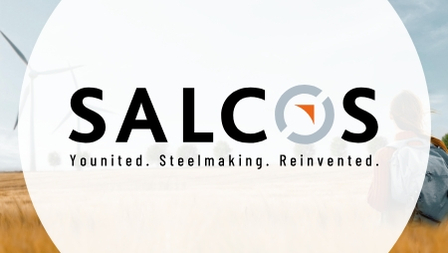Energy-efficient coil coating
15.08.2018 | Salzgitter Flachstahl GmbH

Focused measures can also reduce the use of fossil resources in work processes such as the coating of steel coils.
The measures on Strip Coating Line 2 are a good example of the effectiveness of the "EE - EnergyEfficiency" project that Salzgitter Flachstahl GmbH (SZFG) started several years ago. By implementing two measures, the line's natural gas consumption was gradually reduced by a total of 25% over a period of a few months.
In Strip Coating Line 2, coils are first coated with paint, then burned in in two natural gas furnaces at a circulating air temperature of a maximum of 400° C, and finally rewound. The resulting solvent-containing exhaust air is suctioned off and directed to a regenerative afterburning unit, where it oxidizes at 860° C. This results in residual heat at temperatures of up to 800° C which heat exchangers then help to feed back into the furnace process.
At the end of 2013, one of the project measures involved installing a unit at the furnace entrance that uses the residual heat to preheat the furnace air from 20° C to 250° C. The previous concept was to feed the cold air suctioned into the furnace entrance gate to the front furnace zones to reduce the solvent content. Thanks to the preheating, the line now uses less natural gas and optimizes the quality, because the customary white color, such as used for refrigerators or washing machines, reacts very sensitively to energy fluctuations in the furnace.
The second large action on Strip Coating Line 2 involved deflecting the cooling air at the furnace exit from the regenerative afterburning unit and into the smokestack. Before the system was optimized, flows, sometimes cold, were directed over the regenerative afterburning and heated, although they were moist and low in harmful substances. With the strip coating line modernization, starting early in 2014 these cold flows were directed over a new gas scrubber and into the smokestack. This also saves on natural gas because it is no longer necessary to heat the cold flows with this resource.
Natural gas use in the strip coating line in 2014 was roughly 12% less than in the previous year thanks to the first measure. The optimization of the furnace exit gate in the framework of the diversion of cold flows made it possible to reduce the specific natural gas use by an additional 13% early in 2015.







